Introduction
We’ve talked to so many runners that swear by their running watch.
These people are getting some incredible insight into their daily workout, and it’s allowing them to make leaps and bounds as far as progress is concerned.
Maybe you’re curious about GPS watches. Do they really live up to the hype? In this GPS running watch buying guide, we’ll answer this question and much more.
We’ll tell you everything you need to know about running watches and ultimately how to pick the best running watch for your needs.
Quick Links:
What is a GPS Running Watch?
A GPS watch is a piece of wearable tech that provides valuable insight into your workout. It is geared specifically to runners, but they can be used pretty universally (for biking, walking, and HIIT, for example)
The watch has an integrated GPS receiver in addition to extra electronic components. They all work together to give you feedback and data before, during, and after running.
Though they can be worn casually, they have features that runners can benefit from. Usually a GPS watch can act like a smartwatch as well, although fitness trackers and “typical” smartwatches do have differences.
Do I need GPS?
It depends. If you want key metrics on your running such as pace, cadence, etc then you will need a GPS watch. However if you aren’t looking for those stats and simply want to track basic time and laps, then there’s options like Timex watches.
Top GPS Running Watch Brands
There are a lot of tech companies that released a running watch. Some of the top GPS watch brands are:
That’s not to say that these are the only brands worth knowing about. Like any other industry, there are a ton of brands that deliver a great product. These are just the handful of names that sell a lot of watches each year.
Brand Comparisons
- Apple Watch vs. Garmin
- Garmin vs. Fitbit
- Polar vs. Garmin
- Polar vs. Suunto
- Polar vs. Fitbit
- Garmin vs. Coros
- Garmin vs. Suunto
- Fitbit vs. Coros
- Fitbit vs. Suunto
- Polar vs. Coros
Purpose-Specific GPS Watches
Sometimes we have different purposes when searching for a GPS watch, these might fall into one of the below categories:
- Beginner Friendly Running Watches
- Budget GPS Watches with Activity Tracking
- Trail Running GPS Watches
- Ironman Triathlon Watches
- Running Watches With Music Compatibility
- Waterproof Smartwatches / GPS Watches
- Sports And Fitness Trackers For Kids
- Sports And Fitness Watches For Men
- Sports And Fitness Watches For Women
Basic Features Found on Most GPS Running Watches
Since these watches are all so different, it’s important to highlight some of the features you need to think about. In this section, we’ll explain the important features that should be built into your watch already. These are commonly found features.
Step Counter
A lot of running watches have a little piece of technology in them that counts how many steps you did. Most of them will count your steps by default without you having to initiate anything.
This technology is a lot better than it used to be. In the early days, there was a huge margin of error that would go into your final step count.
Now, watches are getting pretty accurate. We wouldn’t suggest getting a running watch that doesn’t offer a step counter. This basic function is used a lot throughout the watch.
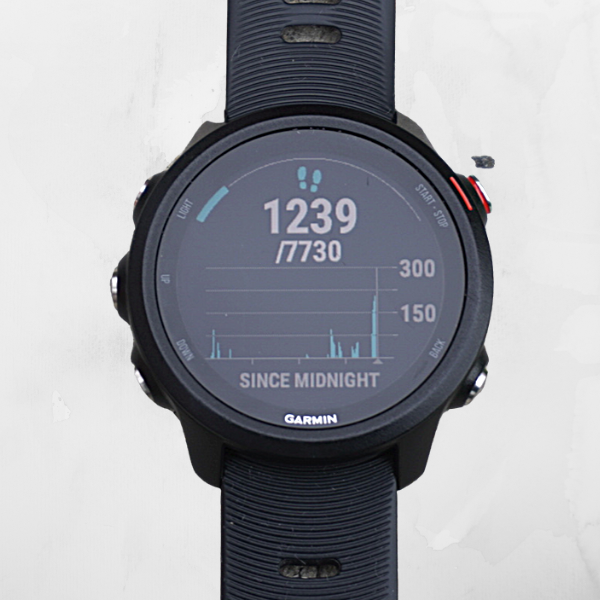
Clock
A lot of people will substitute their regular wristwatch for a running watch rather than wearing both of them.
To make the transition more seamless, a lot of GPS watches actually include a digital watch. It might look a little silly if you try to pair a Rolex and a running watch on the same wrist.
Pro tip: a lot of these options will allow you to change the default face of your watch to the clock. That makes the device more usable, so you’re not always greeted with running statistics instead of the time.
Battery Life
Your running watch is only as good as the battery powering it. Once the battery dies, the data stops being recorded.
For people who like using their watches often and work out frequently, battery life is a big factor. The battery will drain quicker on watches that have more features. It’s a catch-22. You get more data at the expense of a shorter-lasting battery.
Still, most watches charge pretty quickly. It should be simple enough to schedule your charging sessions around your runs. It’s just upsetting to have to postpone a run just so your watch can charge.
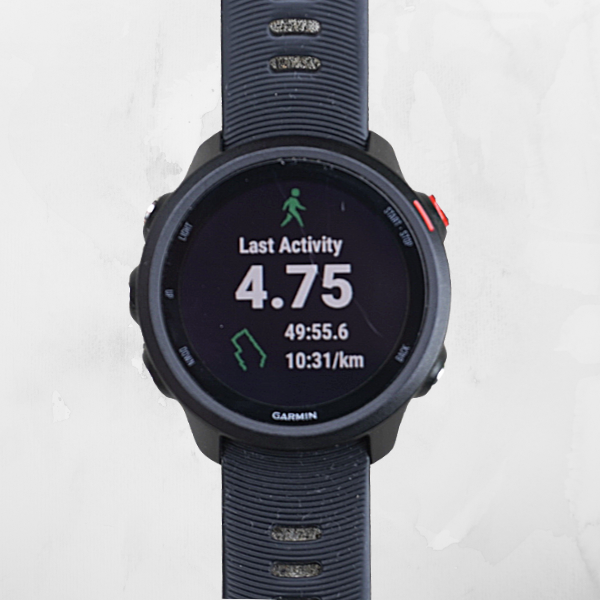
Distance Monitoring
At its core, a GPS watch should detail the distance that you ran. Without this feature, what good is the watch? Watches will use GPS, and they might use an additional pedometer or accelerometer.
These will monitor how many steps you take so the watch can double-check its GPS distance monitoring. If you multiply how many steps you take by your average stride distance, you’ll find out your total distance ran.
Even if the watch solely uses GPS technology, it will provide distance monitoring. The watch will ping satellites as you run, and it will find out your exact location. With enough pings, they’ll know how far you traveled, otherwise known as your distance ran.
Workout History and Metrics
When you’re done a workout, you should be able to access the metrics and data from the run through your watch. It should give you all the data you need which is outlined in this section.
If there’s no workout history, there’s no point in wearing the watch. You can track your progress and see how you’re improving since you can access old data.
Pace and Speed
If something knows your distance and how long it took you to get there, it can calculate a pace and speed. A GPS watch can do this in one of two ways.
If it pings your location twice in half a second and you moved 3 feet in that time, they can plug that into an equation to tell you your speed. Alternatively, the watch can divide your total distance by how long it took you to do it. Miles divided by hours will get you miles per hour.
Some watches have fancier settings where you can set your own pace (more on this later), but almost all of them should tell you what your pace was or is during a run.
Goal Setting
Want to run a mile in 9 minutes today? You can plug this goal into your watch.
Other watches allow more general goals, like burning a certain number of calories, running for a set time, going a certain distance, or simply being active for more than a certain period of time.
All of these goals can be set and adjusted by the wearer of the watch.
Water Resistance
Even if you’re not swimming with the watch, it should be at least water-resistant. The last thing you want is a watch that gets fried just because you’re sweating as you wear it.
Though it might be marketed as “sweat-proof” or “sweat-resistant”, you really care about how your watch can handle water or moisture.
Calories Burned
A great post-workout treat is seeing how many calories you burned during your run. Since this is essentially a measure of your heart rate, distance, height, weight, and pace, a lot of GPS watches will give you this data.
Bluetooth
If you want to connect your phone or external devices to your watch, you’ll need one with Bluetooth connectivity. Most watches include Bluetooth so they can connect to an app on your phone.
Bluetooth allows the watch to talk to other devices and share data between themselves. For example, you can use Bluetooth to pause your music through your watch and your headphones will pause. It also means that you can use your phone to view running data collected by your watch.
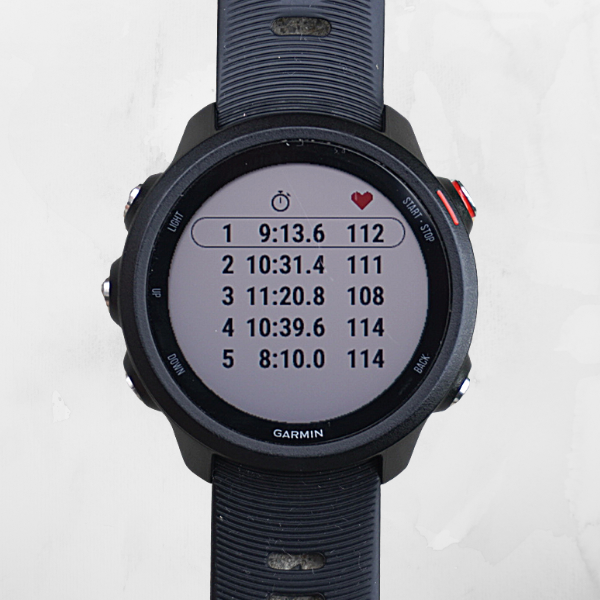
Laps
What about a watch for runners going around a track or running multiple laps around a predetermined course? GPS watches typically have a “lap” function. It works the exact same as a timer or physical stopwatch.
The running timer and data keeps getting collated, but a subsection of data gets stored under this single lap.
At the end of the workout, you can see lap-specific data about your run as well as your overall data. You might see that your pace dramatically slows down over the final few laps. That tells you that you should reconsider your pace and think about starting slower, so you’ll have energy at the tail-end.
Rechargeable Battery
It might seem silly, but it’s worth mentioning. Almost every GPS watch has a rechargeable battery, just like your phone. It would be a buzzkill if you had to put in little watch batteries every week to keep your watch going.
Less Common Features in GPS Running Watches
Now that we’ve established the baseline of features for your watch, let’s look at some of the less common ones. These ones will help runners, but they aren’t necessarily found in every GPS watch.
Music Features
Who doesn’t love some tunes or a nice podcast over a long run? Watch manufacturers understand that, so plenty of running watches are offering built-in music features.
They don’t have speakers to play music, but you can control music playing elsewhere through your watch.
Pause, skip, and control the volume of your song as you run along.
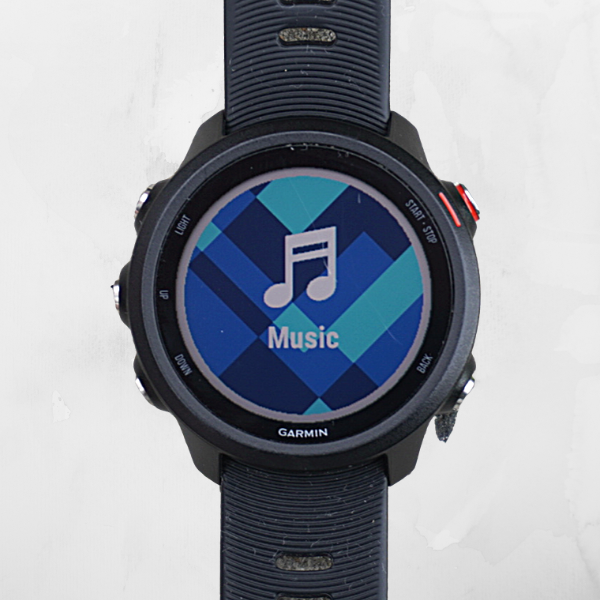
Set Your Own Pace
If you’re having trouble pacing yourself, you can let your watch do the math for you.
Since the GPS watch is always tracking your pace, you can try to aim for a certain one. The watch will alert you if you’re way above or below the set pace. It will show all of your regular stats as well, with the addition of this goal pace.
Customized Time Interval Alerts
Some watches will give you a notification over a predetermined interval. It could be a buzz every mile you run or every 10 minutes that elapse.
This can help runners keep a track of data without constantly looking down at their watch and getting distracted. A subtle buzz will not snap you out of your happy place while you’re leaving more and more asphalt behind you.
It can also be used to swap between running and walking during a high-intensity workout.
Automatic Pausing
If you stop during your run to catch your breath or talk to a friend, you would feel a lot better if you had a watch with automatic pausing. This feature detects when you’re not running, and it will pause everything.
By doing this, you won’t taint data that includes time spent. Resting for a few minutes can dramatically decrease your pace, despite you running like the wind.
Accelerometer
In places where GPS is hit-or-miss, the best running watch is one with an accelerometer. This is a little piece of technology that determines how and where you’re accelerating.
You can take an acceleration and do a little math to it to grab a velocity and a distance. These watches do a better job of being consistently accurate when it comes to running results.
Uploading Data
If you have a companion running app on your phone or computer, you’ll want to buy a GPS watch that uploads data.
Without uploading, the data is just stuck on your watch. This is a problem for runners who want to pull up their running results on their computer and keep track of everything
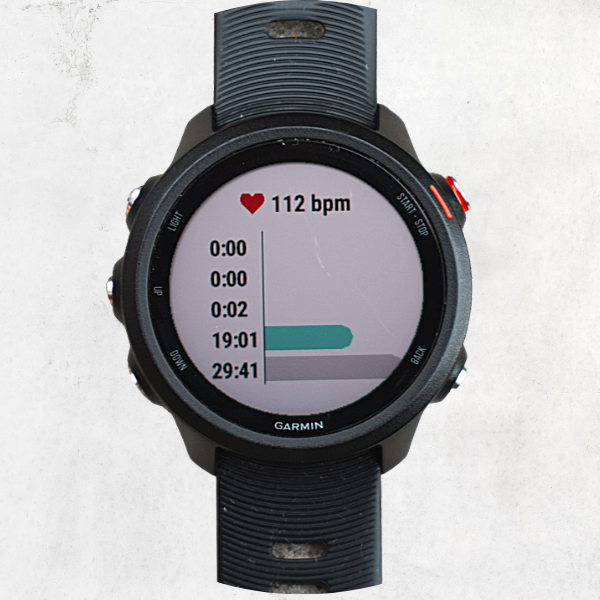
Heart Rate Monitoring
Another important part of working out is keeping an eye on your heart rate. Nicer GPS watches have built-in heart rate monitoring. This will find out what your pulse is, and alert you if it gets too high.
A lot of these watches will also tell you what your average heart rate was during a run. Remember, if your heart rate is lower during a run, it means that your heart is healthier, and your body is more conditioned.
Read more on just how accurate GPS watches are for Heart Rate Monitoring
Safety
GPS watches often have features such as a built-in emergency SOS or live tracking, which can be helpful for safety during solo runs or in unfamiliar areas.
Motivation
Many GPS watches have features such as daily steps or distance goals, or the ability to track and compare your progress to past runs or to other users. These features can be motivating and help you stay on track with your training.
Customization
Many GPS watches allow you to customize the data fields and display on the watch face, as well as create and save custom workouts or training plans. This can be helpful for tailoring the watch to your specific needs and preferences.
Connected features
Some GPS watches offer connected features such as the ability to receive notifications, control music, or make payments with a tap of the wrist. This can be convenient for staying connected while on the go.
Compatibility with third-party apps
Many GPS watches can be paired with third-party apps such as Strava or MyFitnessPal, which can provide even more tracking and analysis capabilities.
Virtual training partners
Some GPS running watches have a virtual training partner feature, which allows you to set a pace or time goal and compete against a virtual runner in real time. This can be a fun and motivating way to challenge yourself during runs.
Recovery tracking
Some GPS running watches have features that help you track your recovery after workouts, such as tracking sleep or providing recovery time recommendations based on your activity level.
Interval training
Many GPS running watches have the ability to create and track interval workouts, which can be helpful for structured training or boosting your speed and endurance.
Advanced Features to Look For
If you don’t mind spending extra on some bonus features, this section is for you. We’ll outline some of the advanced features that are typically reserved for the more expensive watches on the market.
Altimeter
An altimeter is a measurement device that tells you how high up you are. If your GPS watch has one built in, you’ll know what slopes you were running up and down.
An altitude change is also important for specific runners that go up steep, inclined paths. Changing altitude too quickly without resting can do a lot of damage to a human.
For runners who train at high altitudes or compete in hilly or mountainous terrain, a watch with altitude tracking capabilities can be helpful for understanding the impact of terrain on your performance.
Specify and Track Workout Type
More advanced watches will allow you to choose which workout you’re about to do. Pick between things like HIIT, boxing, rowing, swimming, walking, or running.
There is a database that has a ton of information about that kind of workout that your watch will communicate with. As a result, you’ll get tailored results about the workout you just did.
As you probably know, rowing a mile is dramatically different than walking a mile. For the watch to give you the best results, it needs to understand what activity you’re doing and track the corresponding workout.
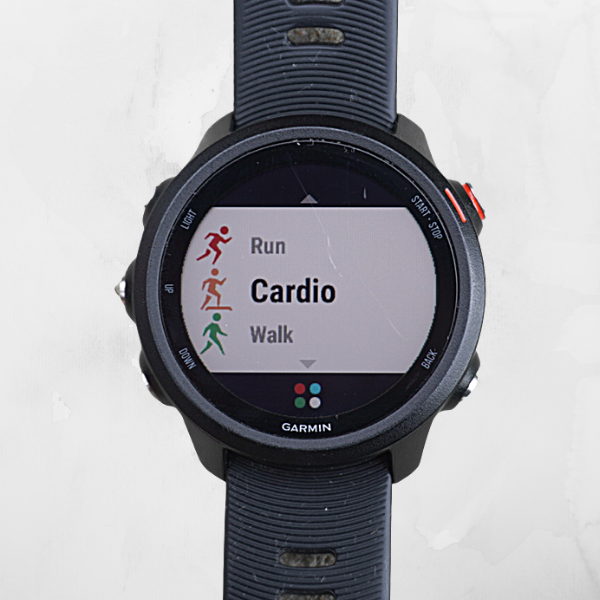
For longer distance runners, it always helps to have a little navigation device on your wrist. These GPS watches will give you directions back home or to different waypoints that you marked.
There are also “breadcrumb” settings that drop pins as you run along. When you want to go back home, you just follow the pins. Navigation is a huge bonus for people who run trails.
More simply, you might just have a compass built into your watch. Sometimes, knowing which way North is will help you get back home.
Longer Battery Life
Just like in a Tesla, you can splurge some extra money to enjoy a longer-lasting battery. For people who run hours on end, this is a must-have.
It’s also useful to people who like to wear their GPS watch every day or want to postpone charging as long as possible.
VO2 Max Figures
Your max VO2 figure is the maximum amount of oxygen that you consumed during a run.
If you’ve ever seen (or been) one of those runners that’s hooked up to an oxygen mask while on the treadmill, you have a glimpse into what VO2 max is.
Your watch can crunch together a few different data points and deliver your VO2 max for any given run.
Read more on VO2 Max and how it’s calculated for runners.
Sleep Monitoring
As you probably know, sleep is super important in a runner’s life. Your body’s ability to recover and be strained ultimately boils down to how much sleep your body needs and how much it got.
Ever felt like everything moves slower when you’re exhausted? A lack of sleep can affect a whole slew of things, including how well you run.
This is why some watches build in some sleep monitoring. It tracks your heart rate, position, and how much you move to determine when you’re asleep and how often you wake up.
In the morning, you’ll have a night’s worth of data to glimpse at. The final figure will tell you how well you slept and how much strain you can take on today as a result.
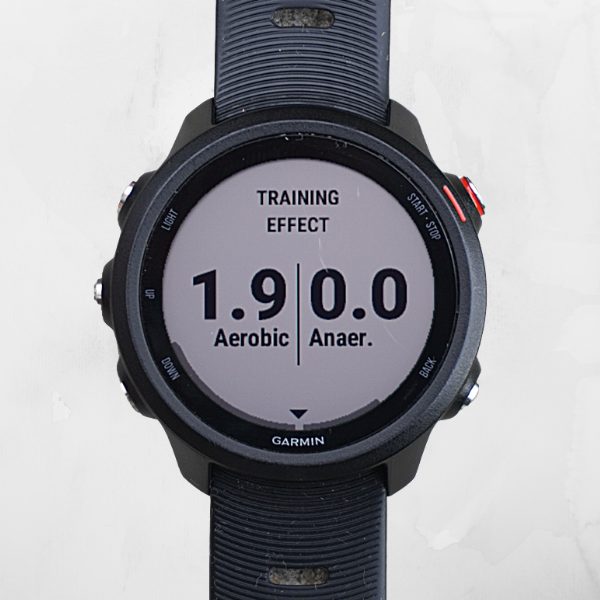
Estimated Training Load
There’s a concept in physical science that looks at your body’s response to workouts. There is a thing called “training load” that basically measures how well or poorly your body reacted to a run.
High-end watches will track and also estimate the training load that you can expect during a day.
There’s a lot of data that can go into this figure. Things like how much sleep you got, how much you weigh, what type of activity you typically do, and stress levels can all change your body’s reaction to a workout.
It makes sense, though. A run after an all-nighter feels a lot worse than a run after 10 hours of sleep.
Multi-sport tracking
If you participate in activities other than running, such as cycling or swimming, you may want to consider a GPS running watch that offers multi-sport tracking capabilities. This is especially important for triathlons.
Costs Associated with Running Watches
So, we just reviewed dozens of different features you can find on a watch. It shouldn’t come as a surprise that watches can also have a wide range of prices.
In general, the more you spend on a watch, the more features you’ll get.
You can pretty much break down the cost structure into three groups of watches.
Entry-Level Watches
These watches will give you the bare minimum that you need. You probably won’t get a VO2 max figure, but you’ll get things like your pace, distance, and calories burnt.
As such, these are the least expensive watches. You can find them for about $150 and lower.
If you’re a beginner runner, don’t want to spend too much money, or just want to try a watch before splurging, we highly suggest entry-level options.
Mid-Level Watches
With more features and better aesthetics, mid-level watches can cost you anywhere from $150 to $450. These have a ton of additional features and connectivity that you won’t find in entry-level watches.
For more seasoned runners, tech enthusiasts, data lovers, or semi-professional athletes, we would suggest a mid-level watch. It has features that will help a lot more with your running.
Advanced (Expert) Watches
If the budget doesn’t matter to you and you only care about the best running data and feedback, you’ll want an advanced or expert watch. These start at $450 and only go up from there. It’s not hard to find options that are a few thousand dollars.
These watches have all the features you could imagine. Some of them are for more niche runners like people who run trails or outdoor paths.
For incredibly serious runners or professional athletes, this is the right type of watch for you.
Benefits of a GPS Running Watch
For people who are a little on the fence about splurging for one of these watches, let’s take a second to talk about the benefits of a GPS watch. What good is a GPS watch buying guide if we don’t tell you all the great parts of owning one of these watches?
Get Some Accurate Figures
If you take your stride and multiply it by how many steps you counted, you can get a rough idea of how far you went. Still, it doesn’t even come close to the accuracy that your GPS watch is providing.
It’s not just your distance or pace, either. All the data that gets collected is more accurate than you might think. There’s some incredible technology and programming built into these watches, especially the advanced ones.
With a watch, you’ll know exactly how far you went, your pace, how many calories you burnt, and so on.
Forget About Holding Your Phone the Whole Time
When we run, we just want to focus on running. We used to hate having to hold our phones the whole time until we get back home.
With a GPS watch, you don’t need to keep your phone in your hand the whole time. Focus on your form and pace, and forget about your watch altogether. Since they’re so small and lightweight, you probably will forget it’s even on. That is, until it buzzes you to tell you that you just did another mile.
They Look Great
Some people wear watches as a fashion statement. With a running watch, you can still do that. These watches have been getting better-looking over the years.
You can choose from a ton of different styles and patterns to ensure you get one that looks perfect on your wrist.
It shows people that you care about your health and you’re a fellow runner. Who knows, you could bump into someone in Trader Joe’s who notices your running watch and you can become friends.
You’re not supposed to kiss and tell, but we’re all about running and telling. With a running watch, you can share your achievements with different social groups.
Some apps connect you with runners of your choosing, and you can share your most recent run and talk about it.
Sharing an achievement works wonders for your brain. You’ll feel more accomplished and proud of your progress.
See High-Level Progress
Do you remember how fast you were running a 5k two years ago? You might have a general idea, but you probably can’t recount exactly how many minutes and seconds it took you.
With a GPS watch, you’ll be able to see your high-level progress. See how you change over a week, month, year, and 5 years.
Since you can scroll back through the data, you can keep an eye on your progress in the long term.
How Easy Are They to Set Up?
Setting up a running watch couldn’t be easier. The best running watch is one that connects to your smartphone with very little hassle.
In a lot of cases, it’s as easy as pairing a new Bluetooth device. You might also go through some simple information to teach the watch more about you. Things like the language you speak, height, and age will be useful later on.
Things to Look Out For
To better prepare you to buy a watch, here are some things to look out for.
The Price is Too Low
In the world of GPS watches, a low price is usually a bad sign. If the price is too low, something’s probably wrong.
Double-check the specifications for the watch and make sure it includes everything you’re looking for.
Battery Life
We keep circling back to the battery life of your watch, but it’s a critical thing to think about. Look out for a watch that features a short battery life.
Constantly charging your watch means that you don’t get to take it on the open road as often as you deserve to.
Wearability
Consider the overall wearability of the watch, including its size, weight, and comfort level. A watch that is comfortable to wear for long periods of time can be more enjoyable to use.
Missing Key Features
This goes hand-in-hand with a price that’s too low. If the prospective watch is missing some key features that you care about, you shouldn’t settle.
If you’re dead set on having sleep monitoring, you shouldn’t grab an entry-level watch that doesn’t offer it.
There’s nothing you can do after the fact to change the watch and include any features that it’s missing. The only option is to buy another watch that has that feature.
Customer support
If you experience any issues with your GPS running watch, it can be helpful to have good customer support from the manufacturer. Consider the reputation of the brand and read reviews from other users to get a sense of their customer support.
Ease of use
Consider the user interface and navigation of the watch. A watch that is easy to use and navigate can be more enjoyable and convenient to use.
Read more here on common GPS watch mistakes and how to correct them.
In-depth Topics on GPS Running Watches:
How to Choose the Best GPS Running Watch
Now, let’s talk about how to pick the best GPS running watch. The answer is going to differ from person to person. We’ll take some time to outline the decision-making process that most buyers go through when choosing a running watch.
Consider the Cost
Budget is going to be the driving force for a lot of watch buyers. Sure, it would be nice to buy a $3,000 GPS watch, but how many sacrifices do you have to make to get that?
There’s always going to be a more expensive watch that offers more. You should consider the cost before swiping your card for a new watch.
Check the Features
As we mentioned earlier, features are make-or-break for a lot of buyers. It’s hard to settle on a watch if it doesn’t have those few features you need for your workout.
As such, you should screen each watch. Only consider the ones that have all the features you’re looking for.
If you realize that only mid-level watches have the features you want, but those watches are outside of your budget, it’s time to do some thinking about which matters most to you. You’ll have to compromise one way or the other.
Look at the Aesthetics
Two watches can be the same price and have the same features but look completely different. They’re made with different clientele in mind.
It’s not a good idea to grab a watch that you hate the aesthetics of. That is, unless you can change the watch strap for something that’s better looking to you.
You’d hate it if you bought the perfect watch, but you were ashamed to wear it because you didn’t like how it looked.
How Does the Watch Fit?
This isn’t a huge deal for most people, but it’s worth trying on a watch and seeing how it feels. Material choices can upset certain runners.
For example, rubber as a material is pretty polarizing. Some runners love it and others despise it.
On top of that, you’ll need to make sure that the wrist strap is large or small enough for your wrist. If the watch has an interchangeable band, you can correct a mis-sized strap.
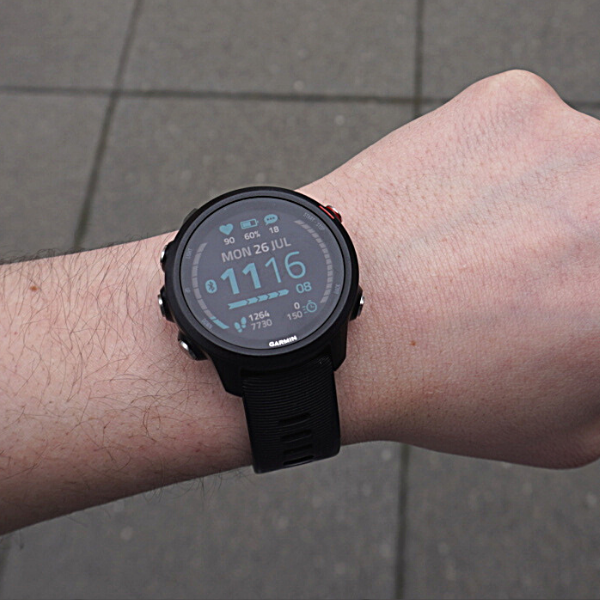
Frequently Asked Questions On GPS Running Watches
Here are our answers to some of your most commonly asked questions.
With the combination of an accelerometer, pedometer, and GPS, GPS running watches are incredibly accurate. The precise level of accuracy varies from watch to watch.
No way. GPS running watches are great for anyone. Even if you’re just jogging or walking, you can benefit from a running watch.
In our opinion, GPS running watches are completely worth it. They unlock so much insight into a workout that you otherwise wouldn’t get. You’ll find yourself progressing faster thanks to the added data.
While they’re not necessary, they’re really helpful. These watches will give you data that means a lot to runners.
That all depends on who you are. After refining your budget, desired features, and needs as a runner, you’ll be able to pick the best running watch.
Conclusion
As you just saw, buying your first GPS watch comes with many decisions. Hopefully, our robust GPS watch buying guide cleared up all of your concerns and answered your questions along the way.
We highly recommend this technology, and we know you’ll love your new purchase. We reviewed features you might care about, the cost, benefits, pitfalls, and the decision-making process of a GPS watch.
Sources
- https://bjsm.bmj.com/content/48/3/197
- https://en.wikipedia.org/wiki/GPS_watch
- https://en.wikipedia.org/wiki/Smartwatch
- https://www.ncbi.nlm.nih.gov/pmc/articles/PMC5887043/
- https://health.clevelandclinic.org/your-fitness-tracker-isnt-the-best-way-to-measure-heart-rate/
- https://en.wikipedia.org/wiki/Water_Resistant_mark
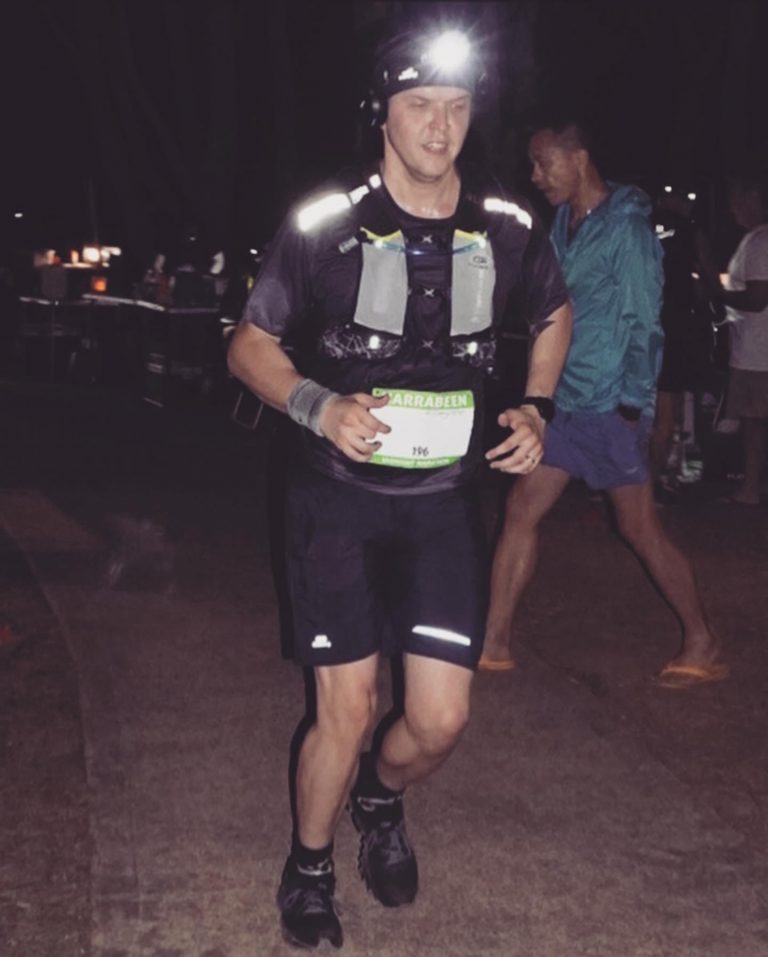
Marko Rakic is a trail runner and fitness enthusiast from Sydney, Australia. He is the lead writer for The Ultimate Primate and believes the best way to live a happy life is through constantly challenging yourself.
